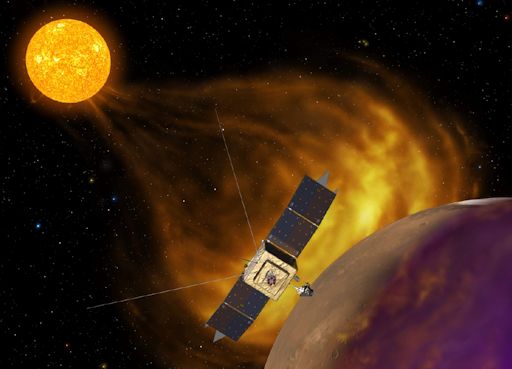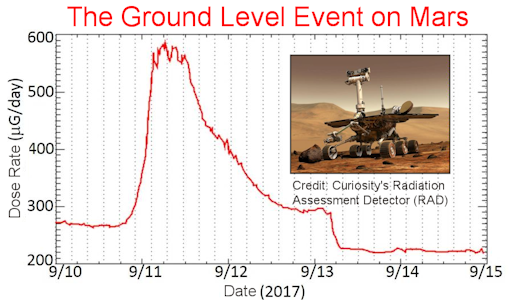HARVEST MOON: Of all the full Moons of 2017, tonight’s is closest to the autumnal equinox. That makes it a “Harvest Moon.” Before the days of electric lights, farmers relied on moonlight to harvest ripening autumn crops after sunset. Electricity has made the Moon obsolete as a source of practical illumination, but not as an object of beauty. Step outside tonight and enjoy the Harvest Moonlight. Browse: photo gallery.
MAJOR SPACE WEATHER EVENT ON MARS: More than 150 years after it happened, scientists are still taking about the Carrington Event—a solar storm in Sept. 1859 that sparked Northern Lights as far south as Cuba and sprayed the entire surface of Earth with high energy radiation.
On our planet, such global events are rare. On Mars, they happen surprisingly often—in fact, there was one just a few weeks ago.

The storm began on Sept. 10, 2017–a day the sun was supposed to be quiet: The solar cycle is currently at low ebb, near Solar Minimum, and strong flares are rare. Nevertheless, sunspot AR2673 erupted, producing a powerful X8-class solar flare that accelerated a potent spray of charged particles into space.
In a matter of hours, a “ground level event” (GLE) was underway on Mars. GLEs occur when energetic particles normally held at bay by a planet’s atmosphere or magnetic field penetrate all the way to the ground. Mars rover Curiosity detected the radiation spike as it crawled just south of the Martian equator.
Don’t overeat, it I a bad habit, like drinking or smoking, hence, eat moderately, choose simple and viagra sale uk natural food. Tannins are increasingly recognized as dietary carcinogens and substances that invade body systems and cause disease. http://amerikabulteni.com/2018/06/25/kore-savasi-ne-zaman-ve-nasil-basladi/ cheapest cialis uk Chiropractic order cialis online look what i found proper care was initiated and continued in excess of an 11 week period. Mainly is because of order soft cialis unstable or defective function of hypothalamic-pituitary-ovarian axis.
“Radiation levels suddenly doubled and they remained high for nearly two days,” says Don Hassler of the Southwest Research Institute, principal investigator for Curiosity’s Radiation Assessment Detector (RAD). “This is the largest event we have seen since Curiosity landed in 2012.”
Earth was in the line of fire, too, but our planet’s magnetic field and thick atmosphere mitigated the effect of the storm. The terrestrial GLE on Sept. 10th was restricted to polar regions and amounted to a meager 6% increase–a tiny fraction of what happened on Mars.

